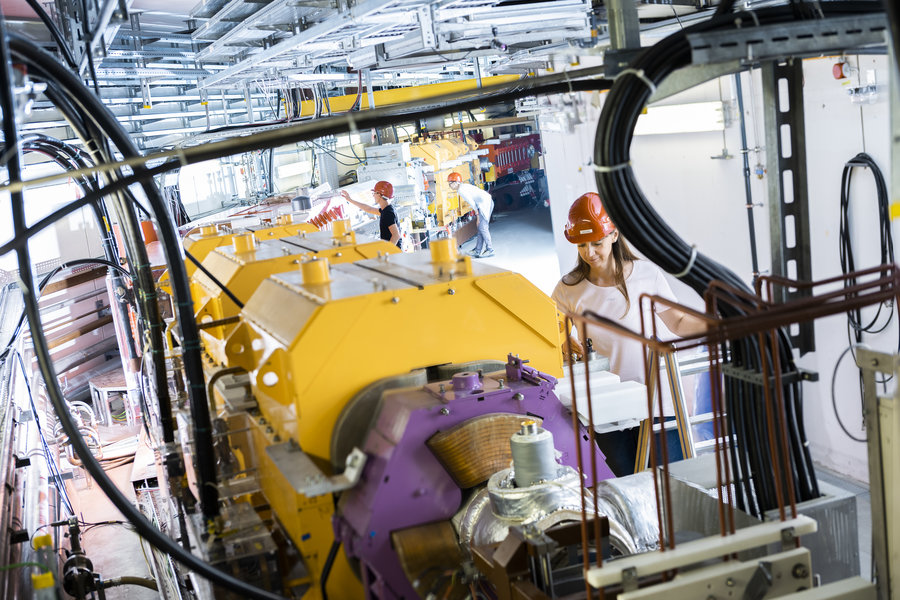HEARTS innovates to foster European access to space
30.03.2023 |
The EU-funded project HEARTS aims at providing access to high-energy heavy ion radiation testing facilities for both space exploitation and exploration. Two new radiation-testing facilities open to space applications, such is the promise of the HEARTS project. Started last January, this project will enable testing high-end microelectronics technology for novel space applications, as well as for shielding and radiobiology experiments that will foster human space exploration. GSI, as the most important high-energy ion accelerator infrastructure, is decisively involved in the project. The new FAIR ring accelerator SIS100, with its high energies, will further expand the perspectives. The HEARTS project is funded with about 3 million Euros, of which a third will be for GSI.
Artificial intelligence, quantum technologies, advanced computing, deep space missions... Projects for new advanced space applications are flourishing. To carry them out, it is essential to use highly advanced radiation-resistant electronic devices and to acquire decisive knowledge of shielding properties and radiobiology for astronauts going to the Moon and beyond. Capable of mimicking the effects of space highly penetrating radiation, very high energy (VHE) ion beams have become extremely attractive for qualifying advanced electronics for use in space and shielding and radiobiology testing. However, there are such European facilities aimed specifically for space applications.
Funded under the Horizon Europe programme, HEARTS (High-Energy Accelerators for Radiation Testing and Shielding) will aim at developing and establishing a European infrastructure for research and industrial access to high-energy heavy ion facilities for the fields of radiation effects in electronics, shielding and radiobiology. For this purpose, it will provide upgrade two VHE ion facilities and provide access to space industries and academia on a routinely basis.
HEARTS will be instrumental to ensure an autonomous European access to space. By making such facilities available in Europe, European companies will be less dependable on critical facilities available elsewhere. By the end of the project in 2026, the HEARTS is expected to bring Europe to be in a position to easily accommodate the current demand for VHE ions and to meet the increasing demand that is foreseen by the end of the decade.
The project is coordinated by CERN, together with GSI as main high-energy ion accelerator infrastructures. HEARTS also includes the University of Padova as an academic partner, as well as Thales Alenia Space and Airbus Defence and Space as industrial participants, all of whom have extensive experience in the field of radiation effects and a strong interest in VHE ion testing.
On the GSI part, the HEARTS project is advanced by the Biophysics Department headed by Professor Marco Durante. The expertise available here in the field of space radiation physics and biology is receiving wide international recognition. As part of the HEARTS work packages, GSI biophysics will make significant preparations for the use of the new FAIR ring accelerator SIS100 for shielding testing. For the HEARTS program, it will be essential the realization of the biophysics test station at SIS100, foreseen in the CBM experimental cave, which will allow a world-record in cosmic ray simulations using 10 GeV/n Fe-ions. The only other facility, Brookhaven National Laboratory in US funded by NASA, offers a cosmic ray simulator with cutoff at 1 GeV/n.
Another work package with strong GSI participation focuses on defining and calibrating the beam delivery sensors for both material shielding and microelectronics. (CERN/BP)
Further informationen
- HEARTS is a project funded by the European Union under Grant Agreement No 101082402, through the Space Work Programme of the European Commission.
- Call to action:Follow the project on LinkedIn











